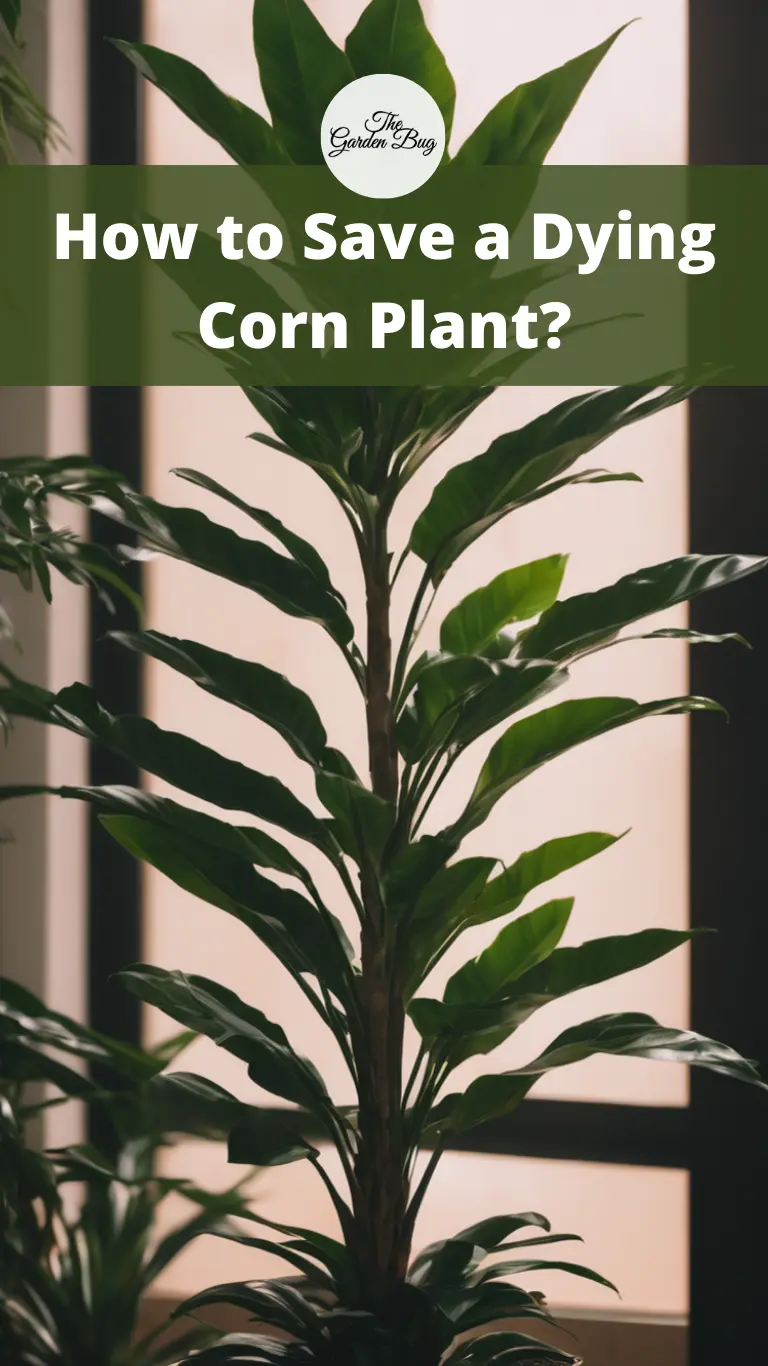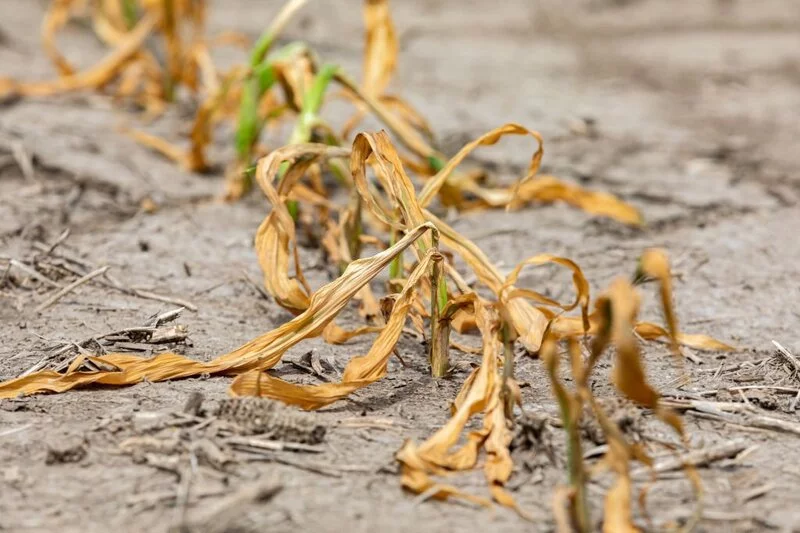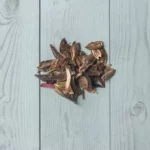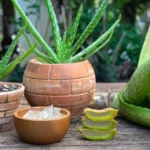Welcome, plant enthusiasts! Today we’re focusing on a household favorite – the corn plant. Known for its vibrant green leaves and low-maintenance nature, the corn plant is a staple in homes worldwide. But what happens when your beloved plant starts showing signs of distress? Don’t worry! Even the brownest thumb can revive a dying corn plant with a little patience, understanding, and tender loving care. Stick with us, and we’ll guide you through the process of nursing your plant back to health.
- Dracaena Massangeana Plant Pot: Dracaena Massangeana, a beautiful house plant, features long, yellow and light green striped green leaves and has a graceful appearance. The leaves grow out of a central woody stalk, much like a real corn stalk.
- Indoor Plants: Dracaena Massangeana plants are also known as Dracaena Fragrans plants as well as corn plants. The USDA hardiness zone for outdoor planting is 10–11.
- Easy Maintenance: Dracaena Massangeana plants are easy to care for; they thrive in fluorescent to bright, indirect light, with the ideal temperature being 65–75° F. A heat pack is included with each plant if your region experiences cold weather.
- Home and Garden Decor: Our Dracaena Massangeana plant pot is perfect for windowsills, countertops, desks, and tables in your home or garden. The plant, which can grow up to 15′ tall at full height, is also a great gift option for friends and family.
- Health Benefits: Live plants purify the air in their surroundings and thus enable you to inhale clean, fresh air while also helping to boost mood levels. The plant is toxic to both humans and pets if ingested.
Recognizing the Signs of a Dying Corn Plant
The first step in saving a dying corn plant is recognizing the signs of distress. Knowing how to “read” your plant can make all the difference. Here are some common symptoms that your corn plant might be struggling:
- Yellowing Leaves: If the leaves of your corn plant are turning yellow, it may indicate overwatering or poor drainage.
- Brown Leaf Tips: Brown leaf tips or edges often suggest a lack of humidity or underwatering.
- Droopy Leaves: While corn plants naturally have a slight droop to their leaves, a pronounced or sudden droop may be a sign of distress, often caused by temperature extremes or root damage.
- Stunted Growth: If your corn plant isn’t growing, it could be due to insufficient light or poor nutrition.
Remember, it’s entirely normal for plants to experience occasional leaf drop or browning, but if these symptoms persist or worsen, it’s time for some plant TLC. Let’s explore how we can assess the care conditions and revive your cherished corn plant. Hang in there; help is on the way!
Assessing the Care Conditions of Your Corn Plant
Corn plants are pretty laid-back, but they do have some preferences. Ensuring these preferences are met is key to a thriving corn plant.
- Light: Corn plants love indirect light. Is your plant near a north or east-facing window? If it’s in a too dark or too bright spot, it might be struggling.
- Temperature: These plants prefer temperatures between 60 and 75 degrees Fahrenheit. Is your plant near a heat vent, an air conditioner, or a drafty window? Such conditions might be causing stress.
- Humidity: Corn plants thrive in higher humidity. Dry air can lead to brown leaf tips.
- Watering: They prefer their soil to dry out slightly between watering. If the soil is constantly soggy, it could lead to root rot.
By checking these care conditions, you’ll often find the root of your corn plant’s problems.
How to Revive a Dying Corn Plant
Now, let’s get to the exciting part – reviving your corn plant! Here’s a step-by-step guide:
- Relocate: If the light, temperature, or humidity conditions are off, move your plant to a more suitable location.
- Trim: Remove any yellow or brown leaves with a clean pair of scissors. This helps the plant focus its energy on new growth.
- Water Correctly: If overwatering is an issue, allow the soil to dry out before watering again. If underwatering is the problem, water more regularly, but avoid waterlogging the soil.
- Refresh Soil or Repot: If the plant has been in the same soil for several years or the roots look crowded, it might be time to give it fresh soil or a larger pot.
- Feed: If your plant shows signs of nutritional deficiency, feed it with a balanced, water-soluble fertilizer.
- 🌱 PERFECT BLEND OF NUTRIENTS – Give your succulent plants everything they need to grow up healthy! Our 3-1-2 liquid concentrate has all of the essential nutrients that your plants crave.
- 🌱 MIX WITH WATER – Designed to blend with water to provide a single application to use every other watering cycle. 1-2 tsp per 8 cups water.
- 🌱 SUITABLE FOR ALL VARIETIES – You can use our fertilizer on just about any kind of succulent plant. It’s great for seedlings and mature plants alike.
- 🌱 SPECIALLY DESIGNED PREMIUM FORMULA – Special blend enables maximum absorption for plant growth and vitality.
- 🌱 DURABLE PACKAGING – This liquid concentrate comes in a sturdy, 8 oz sealed bottle. Store it in a safe, dry place and you can count on it to stay in great condition for a long time to come.
Remember, reviving a plant takes time, so don’t worry if your corn plant doesn’t bounce back immediately. Patience is key. Up next, we’ll provide some tips to keep your corn plant healthy and prevent future problems. You’re doing great! Keep going!
Preventing Future Problems
Prevention is always better than cure, and this holds true for your corn plant’s care as well. Here are some ways to keep your corn plant happy and thriving:
- Consistent Care: Try to keep the watering, light, and temperature conditions as consistent as possible. Plants thrive on consistency!
- Regular Checks: Keep a close eye on your corn plant. Regular checks can help you spot and address any issues early before they become significant problems.
- Proper Nutrition: Feed your corn plant with a balanced fertilizer during the growing season (spring and summer) to ensure it gets the nutrients it needs.
- Right Environment: Try to mimic the corn plant’s natural environment as closely as possible, considering light, humidity, and temperature.
Taking these preventive steps can help keep your corn plant looking lush and vibrant for years to come.
Conclusion
And there you have it! Bringing a dying corn plant back to life isn’t as daunting as it seems. With the right knowledge and a little bit of care, your corn plant can be restored to its former glory. Remember, the key is understanding your plant’s needs and meeting them consistently. So don’t be disheartened if your green friend is feeling a little under the weather. With these steps, you’re fully equipped to nurse it back to health. Keep growing, plant lovers! Your corn plant is counting on you!







